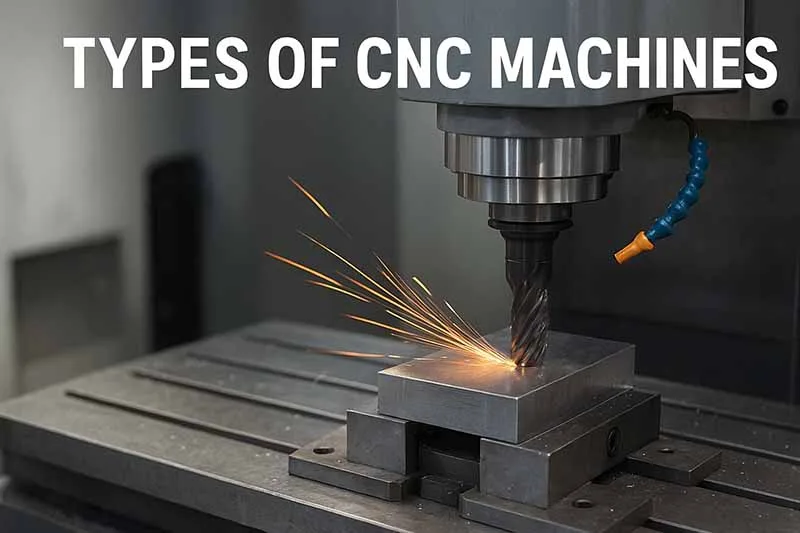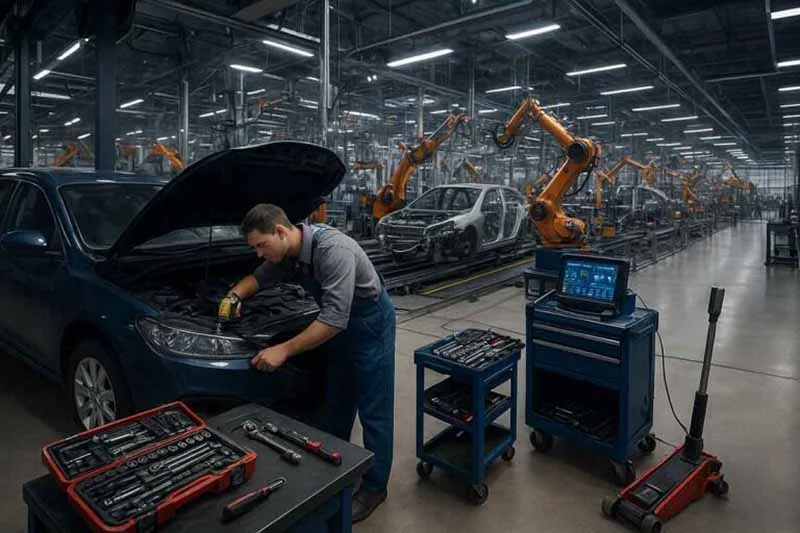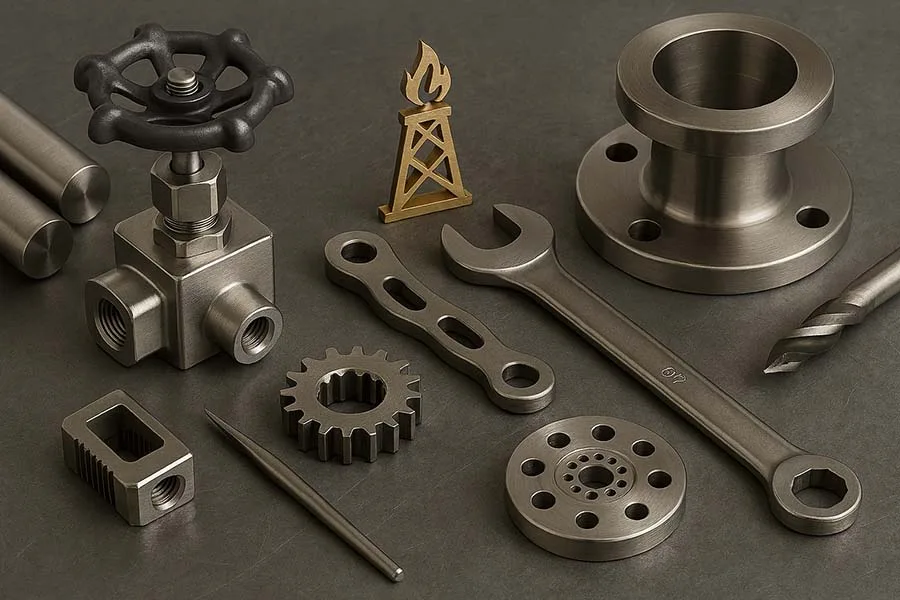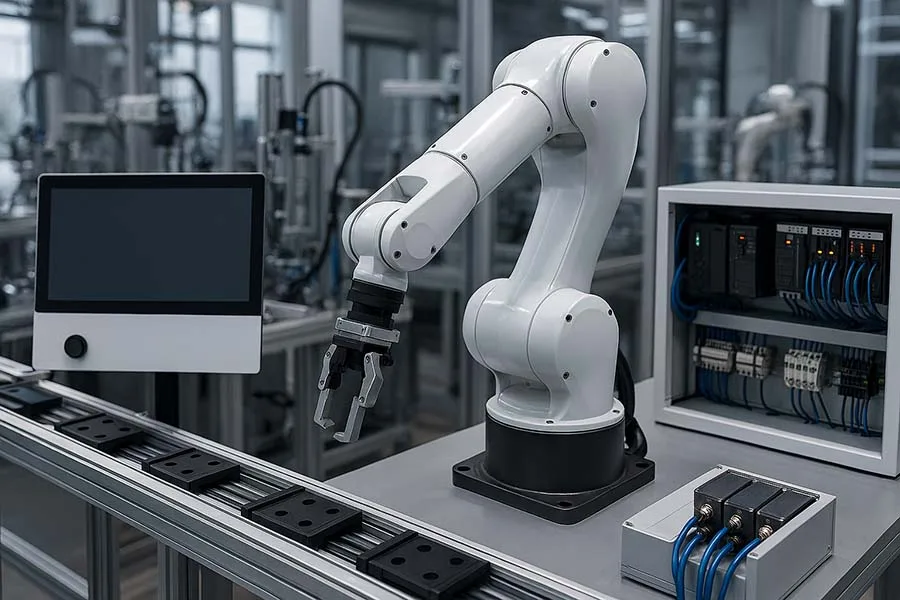Introduction
CNC machines are the backbone of modern manufacturing. From shaping aerospace components to crafting custom furniture, these computer-controlled tools have transformed how industries cut, drill, and assemble materials. But not all CNC machines are built the same. Each type has unique capabilities, advantages, and limitations — which is exactly why knowing the differences is essential for engineers, machinists, and buyers.
In this article, we’ll break down the most common types of CNC machines — from the classic CNC lathe to plasma cutters and even hybrid systems. Along the way, you’ll learn what each machine does best, where it’s typically used, and what to consider if you’re planning to use or purchase one.
What Is a CNC Machine?
A CNC (Computer Numerical Control) machine is a manufacturing tool that operates using programmed commands instead of manual control. These machines can cut, drill, engrave, shape, or weld materials with incredible accuracy.
Unlike traditional machines, where operators control every motion by hand, CNC machines follow digital instructions (known as G-code). This allows for repeatable precision, higher speed, and the ability to create complex shapes that would be impossible with manual methods.
What is the difference between CNC and traditional machining?
Traditional machining relies on manual operation, while CNC machining uses computer programming to control cutting tools, making it faster, more accurate, and capable of complex designs.
Main Types of CNC Machines
1. CNC Lathe
The CNC lathe is one of the oldest and most widely used CNC machines. It rotates a workpiece while cutting tools shape it into cylindrical or conical forms.
- Best for: Shafts, bolts, bushings, and precision round parts.
- Industries: Automotive, aerospace, medical, and industrial equipment.
- Key advantage: Superior accuracy in turning operations.
- Limitation: Not ideal for flat or irregularly shaped parts.
👉 Funny fact: Some machinists joke that CNC lathes are like “potter’s wheels for metal” — except instead of clay, you’re shaping titanium or steel.
2. CNC Milling Machine
The CNC mill is perhaps the most versatile CNC machine. It uses rotary cutters to remove material and can operate on multiple axes (commonly 3, 4, or 5).
- Best for: Flat surfaces, slots, gears, molds, and complex 3D parts.
- Industries: Aerospace, automotive, consumer electronics, toolmaking.
- Key advantage: Handles a wide range of materials, from plastics to hardened steel.
- Limitation: Typically slower than lathes for simple cylindrical parts.
👉 Lesser-known fact: The first CNC milling machines in the 1950s were controlled using punched tape — the ancestor of today’s CAD/CAM systems.
3. CNC Router
Similar to a milling machine, the CNC router is designed for softer materials like wood, plastics, and composites. Routers are lighter, faster, and ideal for large-scale cutting.
- Best for: Sign making, cabinetry, furniture, and decorative panels.
- Industries: Woodworking, plastics manufacturing, prototyping.
- Key advantage: High-speed cutting over large surface areas.
- Limitation: Not suitable for hard metals.
4. CNC Plasma Cutter
A CNC plasma cutting machine uses a plasma torch to cut through conductive metals like steel, stainless steel, and aluminum.
- Best for: Cutting sheet metal, structural steel, automotive panels.
- Industries: Construction, automotive repair, shipbuilding, metal fabrication.
- Key advantage: Fast, clean cuts on conductive materials.
- Limitation: Cannot cut non-conductive materials like wood or plastic.
👉 Funny fact: Plasma cutters literally use lightning in a controlled form — plasma is the fourth state of matter, and you’re cutting metal with it!
5. CNC Laser Cutter
A CNC laser cutting machine uses a high-powered laser beam to cut or engrave materials.
- Best for: Thin sheet metal, acrylics, plastics, wood, and engraving.
- Industries: Electronics, signage, jewelry, medical devices.
- Key advantage: Extremely precise, capable of very fine detail.
- Limitation: Slower than plasma on thick metals.
6. CNC EDM (Electrical Discharge Machining)
EDM machines use electrical sparks to erode material, usually for very hard metals or complex shapes.
- Best for: Dies, molds, turbine blades, aerospace parts.
- Industries: Aerospace, medical, defense, tool & die making.
- Key advantage: Can machine very hard metals with tight tolerances.
- Limitation: Slower and more expensive than milling or turning.
7. CNC Waterjet Cutter
A CNC waterjet machine uses a high-pressure stream of water (sometimes with abrasive particles) to cut through materials.
- Best for: Heat-sensitive materials like glass, stone, ceramics, and composites.
- Industries: Aerospace, stoneworking, defense, custom manufacturing.
- Key advantage: No heat-affected zones (HAZ), making it ideal for materials sensitive to high temperatures.
- Limitation: Slower than laser or plasma on thin metals.
Emerging & Hybrid CNC Machines
Beyond the main categories, industries are also embracing hybrid CNC machines that combine multiple processes (e.g., milling + 3D printing). These allow manufacturers to build and refine parts in one setup, saving time and cost.
Examples include:
- Mill-Turn Centers (combining lathe and mill functions).
- CNC Additive + Subtractive Machines (3D print + mill).
- Robotic CNC Systems (flexible, multi-axis machining with robotic arms).
Choosing the Right CNC Machine
Selecting the right CNC machine depends on:
- Material type (metal, wood, plastic, composite).
- Part geometry (simple, cylindrical, or complex 3D).
- Production volume (prototype, small batch, or mass production).
- Budget & speed requirements.
What CNC machine is best for beginners?
CNC routers are often recommended for beginners because they’re more affordable, user-friendly, and designed for softer materials like wood and plastics.
Want To Learn More?
- CNC Machining Fundamentals
- CNC Machining Explained: Precision, Process & Possibilities
- CNC Technology: From Punched Tape to Smart Machining
- Types of CNC Machines (Lathe, Mill, Router, Plasma, etc.)
- CNC Programming Languages (G-code, M-code)
- Most Common CNC Programming Errors
- CNC vs Manual Machining: Differences, Pros & Cons Explained
Conclusion
CNC machines come in many shapes and forms — each with its own specialty. Whether it’s a lathe for turning precision parts, a router for woodworking, or a plasma cutter slicing steel with lightning, the right CNC machine can dramatically improve efficiency, accuracy, and design flexibility.
As CNC technology continues to evolve, hybrid systems and smarter automation will only expand the possibilities. For anyone in manufacturing, understanding these machine types is the first step toward choosing the right solution.





